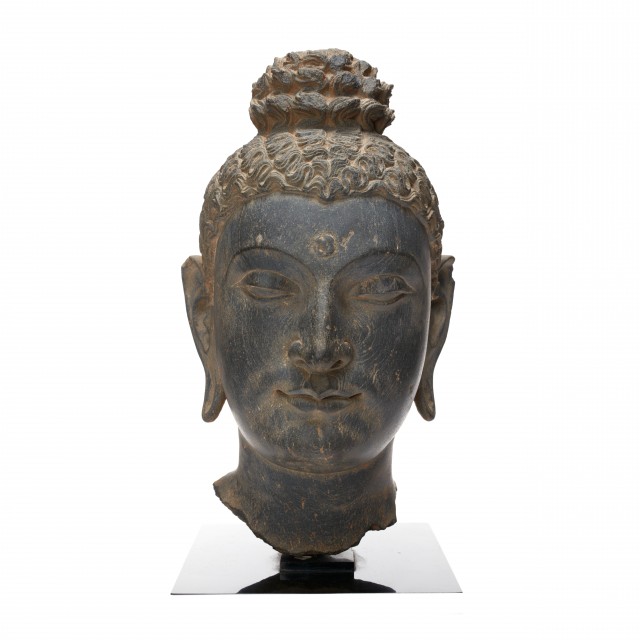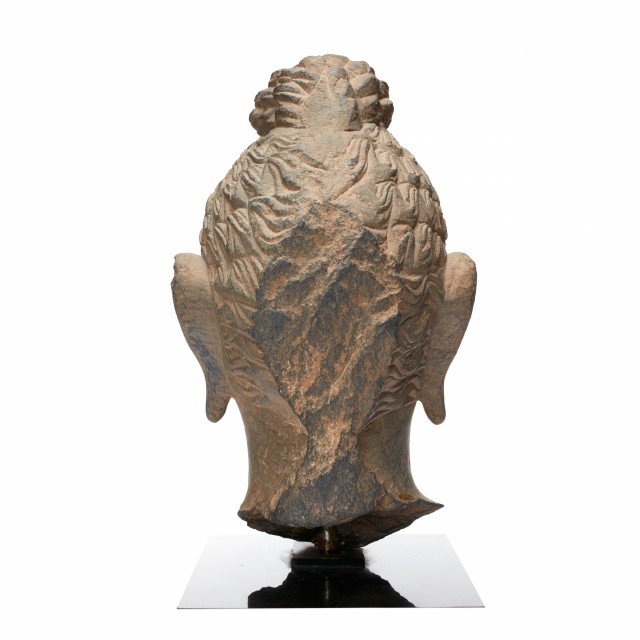
Head of Buddha

Photography by Synthescape, Digital image © Asia Society

Photography by Synthescape, Digital image © Asia Society
Head of Buddha
Late 2nd-early 3rd century
Pakistan, Gandhara area
Schistose phyllite
H. 14 1/2 x W. 7 3/4 x D. 9 1/4 in. (36.8 x 19.7 x 23.5 cm)
Asia Society, New York: Mr. and Mrs. John D. Rockefeller 3rd Collection, 1979.2
Provenance
John D. Rockefeller 3rd, New York, NY; acquired from Heeramaneck Galleries, New York, NY, May 1966.
The Asia Society, New York, NY, bequest of John D. Rockefeller 3rd, New York, NY, 1979.
Licensing inquiries
According to tradition, the historical Buddha Shakyamuni lived from about 563 to 463 B.C.E. Until roughly four hundred years after his death, however, the Buddha was not depicted in human form. Since no one knows what the Buddha looked like, his image was created to represent certain ideas about his life and his special capabilities. This Buddha head, including a portion of the neck, exhibits a number of characteristics that indicate his perfected and supernormal nature. These include a bump atop the head (ushnisha) signifying his expanded wisdom and a small circle in the middle of his forehead (urna). The Buddha's elongated earlobes refer to his early life as a prince, when he wore heavy earrings. When he left his father's palace and renounced material possessions, he removed his earrings. The holes left by the earrings remind the faithful that they, too, should reject worldly goods and pleasures. The face is slender and oval-shaped with high cheek bones and a small, pointed chin. The hair flows over the head and ushnisha in tight curls arranged in a pattern resembling a ribbon with rounded, zig-zag folds; the hair terminates in a widow's peak at the center of the forehead. The eyes are slightly downcast and the eyelids partially closed. The angular eyebrows--formed by a crisp intersection of forehead and eye socket planes--spring from the bridge of the nose and enframe the eyes in semi-circular arches. The nose is slender but long and pointed. The mouth is small and betrays a hint of a smile. The sensitively modeled cheeks are full and fleshy, and the lobes of the elongated ears are pierced, although the stone is not actually pierced all the way through. The back of the head is somewhat elongated and there is a rough area at the very back, indicating that this head was originally attached to the full image at the back--presumably to a halo--as well as at the neck. This piece is probably from the Swat Valley in Pakistan.


